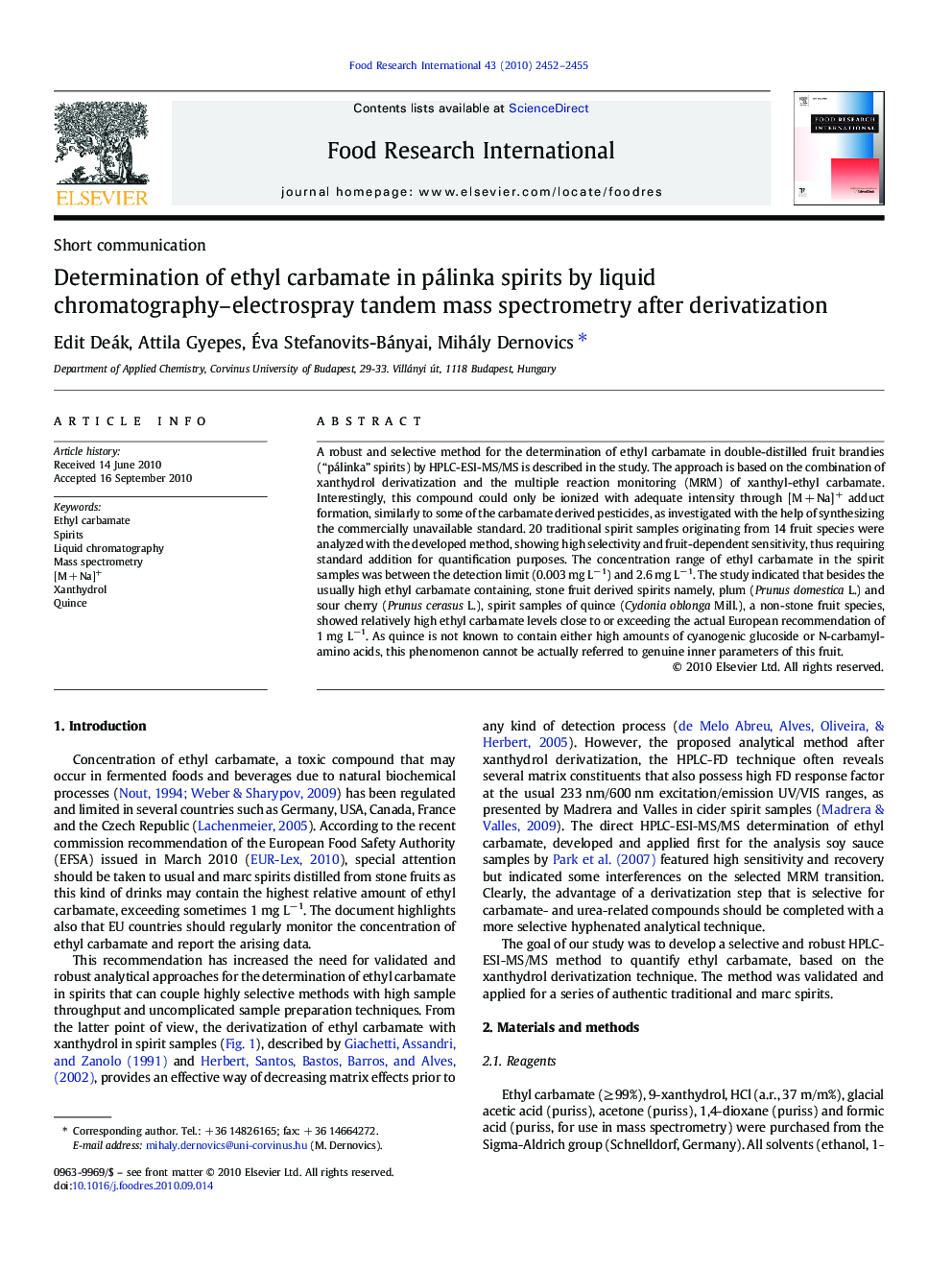| Article ID | Journal | Published Year | Pages | File Type |
|---|---|---|---|---|
| 4562551 | Food Research International | 2010 | 4 Pages |
A robust and selective method for the determination of ethyl carbamate in double-distilled fruit brandies (“pálinka” spirits) by HPLC-ESI-MS/MS is described in the study. The approach is based on the combination of xanthydrol derivatization and the multiple reaction monitoring (MRM) of xanthyl-ethyl carbamate. Interestingly, this compound could only be ionized with adequate intensity through [M + Na]+ adduct formation, similarly to some of the carbamate derived pesticides, as investigated with the help of synthesizing the commercially unavailable standard. 20 traditional spirit samples originating from 14 fruit species were analyzed with the developed method, showing high selectivity and fruit-dependent sensitivity, thus requiring standard addition for quantification purposes. The concentration range of ethyl carbamate in the spirit samples was between the detection limit (0.003 mg L−1) and 2.6 mg L−1. The study indicated that besides the usually high ethyl carbamate containing, stone fruit derived spirits namely, plum (Prunus domestica L.) and sour cherry (Prunus cerasus L.), spirit samples of quince (Cydonia oblonga Mill.), a non-stone fruit species, showed relatively high ethyl carbamate levels close to or exceeding the actual European recommendation of 1 mg L−1. As quince is not known to contain either high amounts of cyanogenic glucoside or N-carbamyl-amino acids, this phenomenon cannot be actually referred to genuine inner parameters of this fruit.
